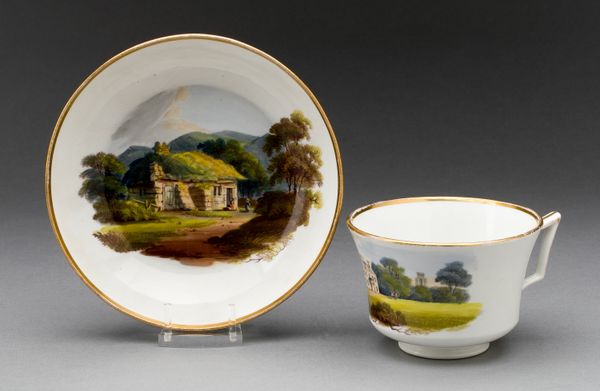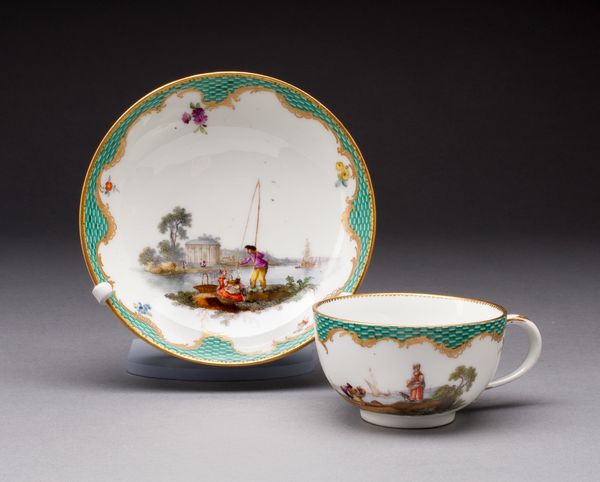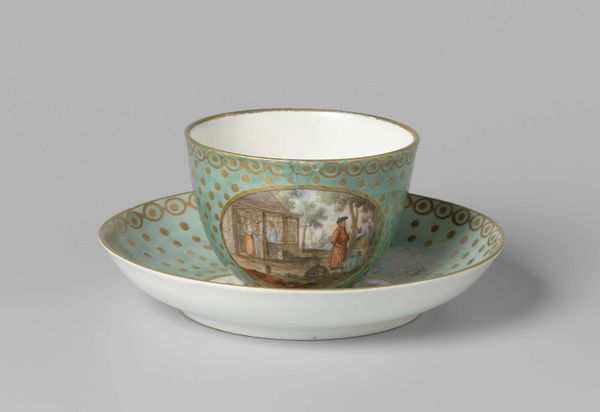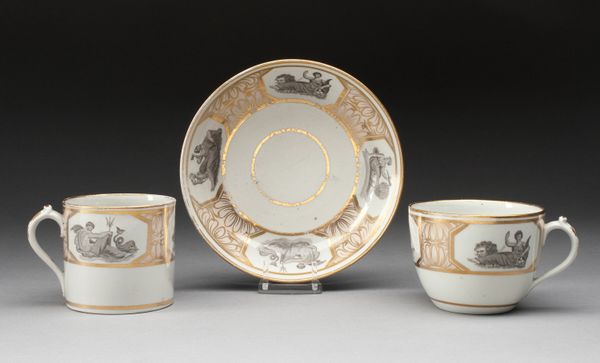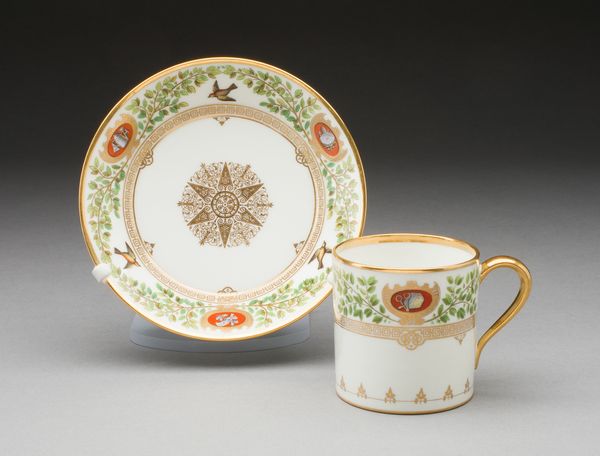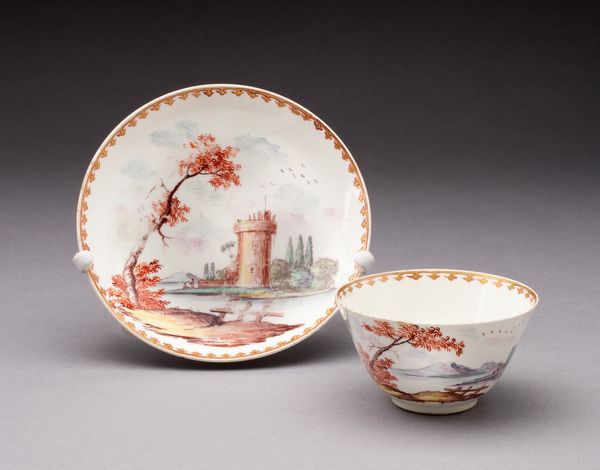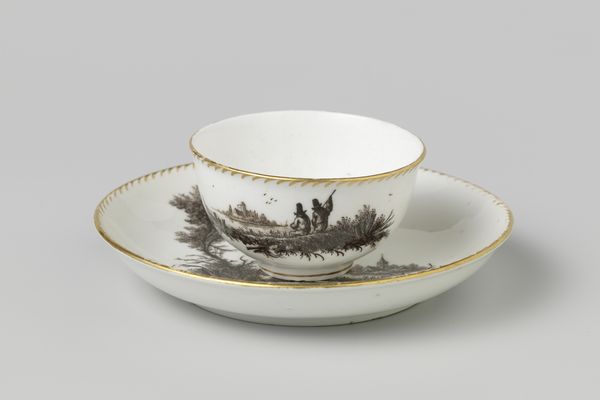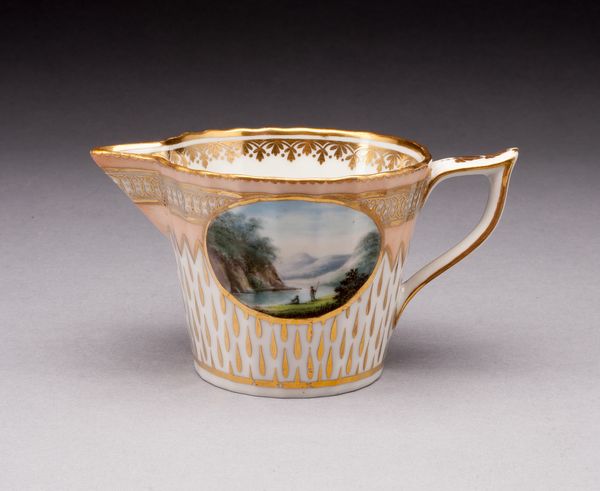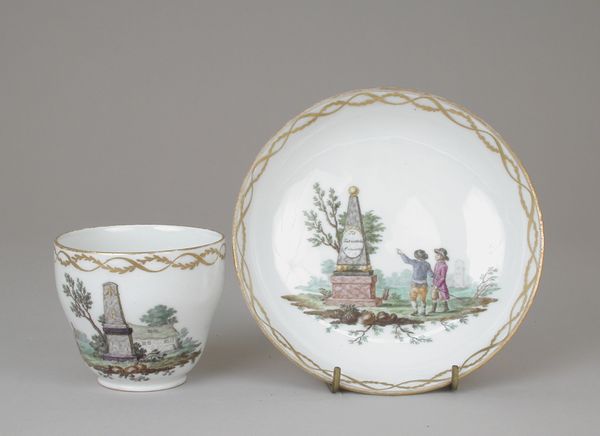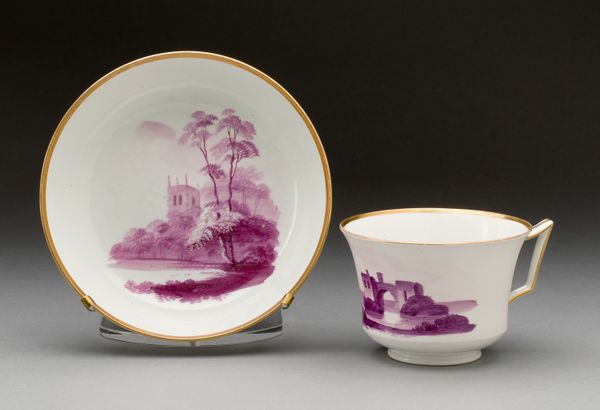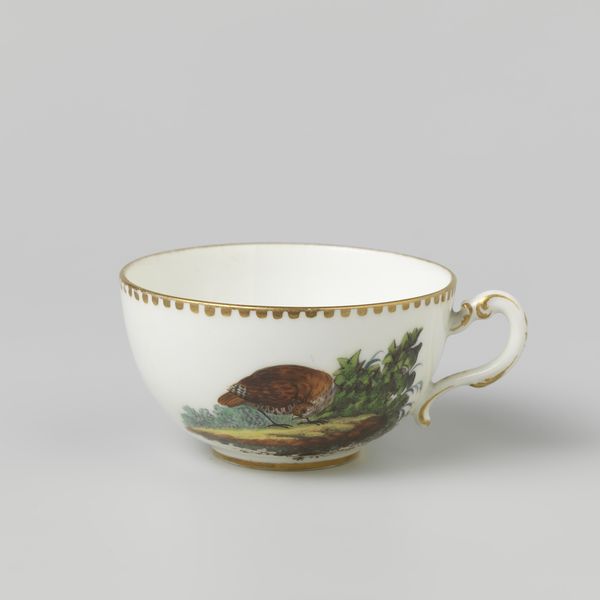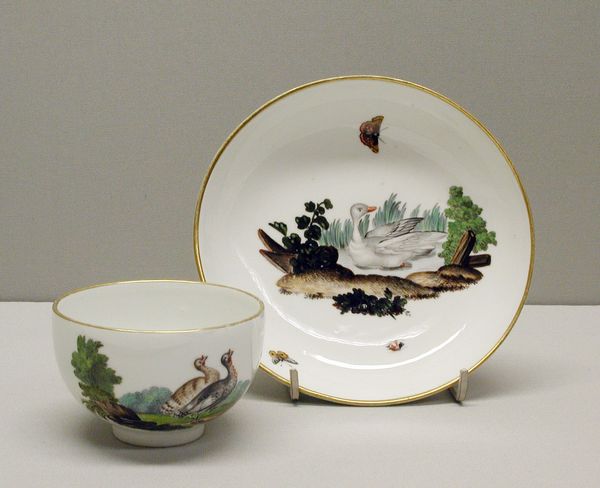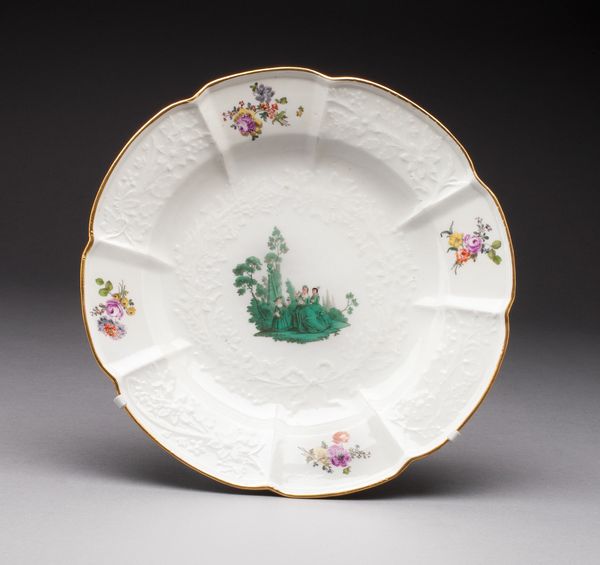
painting, ceramic, porcelain
#
neoclacissism
#
painting
#
ceramic
#
porcelain
#
ceramic
#
decorative-art
Dimensions: Cup: H. 6 cm (2 3/8 in.); diam. 6.4 cm (2 1/2 in.) Saucer: H. 3.8 cm (1 1/2 in.); diam.12.7 cm (5 in.)
Copyright: Public Domain
Curator: Let's turn our attention to this "Cup and Saucer," created around the late 18th century by the Fürstenberg Porcelain Factory. It's a charming example of Neoclassical decorative art made of painted porcelain. Editor: It strikes me as simultaneously elegant and slightly mournful. The porcelain is pristine, yet the sepia-toned depictions of classical ruins feel wistful. Curator: Absolutely. The imagery directly evokes the Grand Tour, a rite of passage for upper-class Europeans who visited ancient sites like Rome and Athens, fueling Neoclassicism. The ruins become symbols of lost empires. Consider, too, the power structures that determined who had access to this formative journey and the narratives perpetuated around colonialism. Editor: I see those ruins as more than just lost empires. To me, the image on the saucer—the Parthenon, specifically—becomes an emblem of Western ideals about democracy and philosophy, presented in a delicate, domestic form. Is it trying to ennoble the owner, align them with these values? Curator: The objectification of cultural heritage always requires critical consideration of cultural impact and political economy. Think about the complex colonial dynamics at play in celebrating such artifacts through commodity objects during that period, which has reverberating impact on current debates of repatriation. Editor: You make an excellent point about repatriation; there are some things that a museum setting can't justify despite offering it to a larger public for "observation." But regarding its earlier consumers, these motifs held a very specific allure. The gilded borders add another layer of visual interest, almost framing these idealized scenes as precious memories, or perhaps unattainable aspirations. Curator: The gold is quite literally a marker of capital, class, and power, setting the work apart from what common people owned. Even today, a seemingly innocent, even beautiful object such as this reminds us that it is imperative to unpack historical context with today's knowledge. Editor: This piece serves as a great point for discourse on the many intricate historical and visual dimensions embedded within it, from design to intent. Curator: Indeed. Reflecting on its role in its original setting provides insights into both the artistic climate and sociopolitical landscape.
Comments
No comments
Be the first to comment and join the conversation on the ultimate creative platform.

